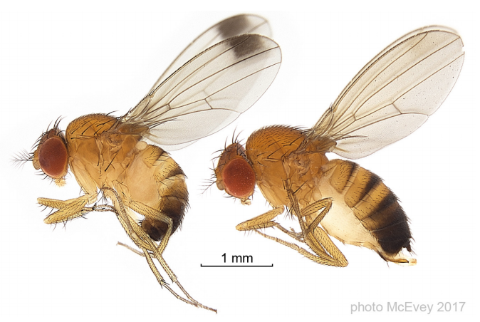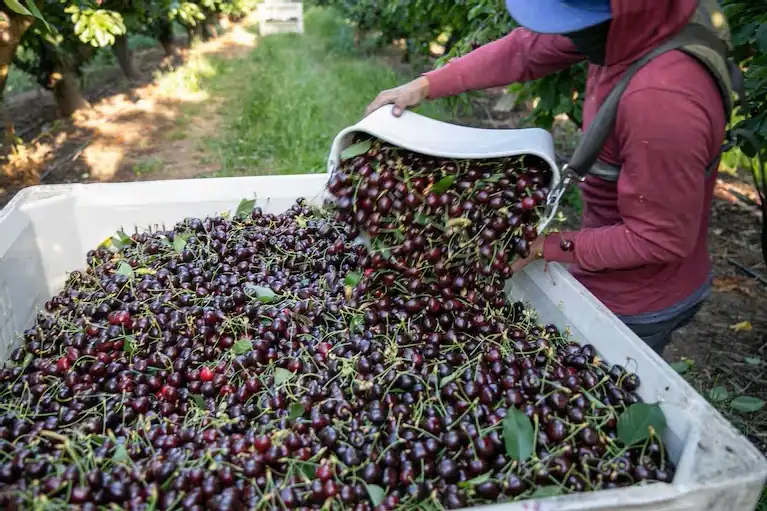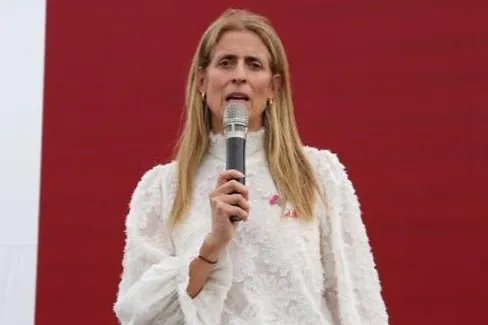The Drosophila suzukii or spotted-wing drosophila is a fruit crop pest that poses a significant economic threat to species like cherries, blueberries, raspberries, blackberries, peaches, nectarines, apricots, grapes, among others.
Originating from Asia, it was first detected in Spain in 2008, and its control relies on chemical insecticides such as spinosyns, organophosphates, pyrethroids, and neonicotinoids, which are not highly effective due to the insect’s short biological cycles.
Typically, applications are accompanied by crop control measures, such as removing infested or overripe fruits and using protective nets or traps to reduce pest populations.
In the search for strategies to control this insect, alternative biological control measures are being developed, including natural repellents, predators, parasitoids, or entomopathogenic species of nematodes and fungi.
Increased effectiveness in the larval stage
A study by the Department of Animal Biology, Plant Biology, and Ecology at the Autonomous University of Barcelona confirmed in laboratory settings the potential of entomopathogenic nematodes for biological control against Drosophila suzukii, particularly in the larval stage.
Published in the August-September 2024 issue of Phytoma, the work studies the susceptibility of different pest stages to entomopathogenic nematodes.
In addition, researchers developed two preliminary tests under laboratory conditions: one to assess the dispersion ability of nematodes by infected adults and another to evaluate their effectiveness when applied to strawberries infested with D. suzukii larvae.
The tests were conducted using nematodes from the Zoology Unit strain collection at the Autonomous University of Barcelona (UAB): Steinernema feltiae (isolated from a raspberry field in Extremadura), S. carpocapsae (isolated from an urban garden in Barcelona), and Heterorhabditis bacteriophora (commercial strain).
In susceptibility tests, D. suzukii larvae showed high susceptibility to the three treatments, with mortality rates between 75% and 95%.
A high influx of nematodes was observed, and both S. feltiae and S. carpocapsae were able to reproduce in the larvae and generate new infectious forms.

Image 1. Cherry fruits with Drosophila suzukii larvae. Source: Boselli, Emilia-Romagna Region
Variable results in tests on adult insects
In contrast, in the tests on mature adults, mortality varied significantly depending on the treatment received. Treatments with S. feltiae and H. bacteriophora showed low virulence, with adult mortality rates of 4% and 1%, respectively.
However, treatment with S. carpocapsae achieved a 64.6% mortality rate. These results are similar to those found in other insects, such as Ceratitis capitata or Tuta absoluta, where S. carpocapsae demonstrated a high ability to infect adults.
In the case of newly emerged adults, higher susceptibility compared to mature adults was observed, reaching 89.56% mortality with S. carpocapsae treatment.
According to the authors, this is due to the increased vulnerability of adults to infection after emergence from the pupa, given their soft cuticle and limited mobility.
When assessing the ability of infected D. suzukii adults to disperse nematodes, the results confirmed both the high capacity of S. carpocapsae to infect adults upon emergence from the puparium, as well as that flying adults infected by nematodes can disperse and, upon death, release the nematodes reproduced within them into nearby areas.

Image 2. Spotted-wing Drosophila: male (left) and female (right) (SWD). Source: Shane F. McEvey, Australian Museum
“About 17.9% of these infected adults could fly, carrying up to four nematodes inside. In field conditions, these infected flying adults could disperse the nematodes that reproduced within them,” the researchers state.
Finally, preliminary tests of nematode application on fruits infested with larvae showed about 30% efficacy for S. feltiae and S. carpocapsae.
“Field trials are needed to confirm the efficacy of nematodes in real-world conditions and to determine their potential as a control method for D. suzukii,” the authors conclude.
To download the publication, click here.
Source: Biologicials Latam
Image: Drosophila suzukii adults infected by Steinernema carpocapsae. Photo: Autonomous University of Barcelona.
Italian Berry - Tutti i diritti riservati











